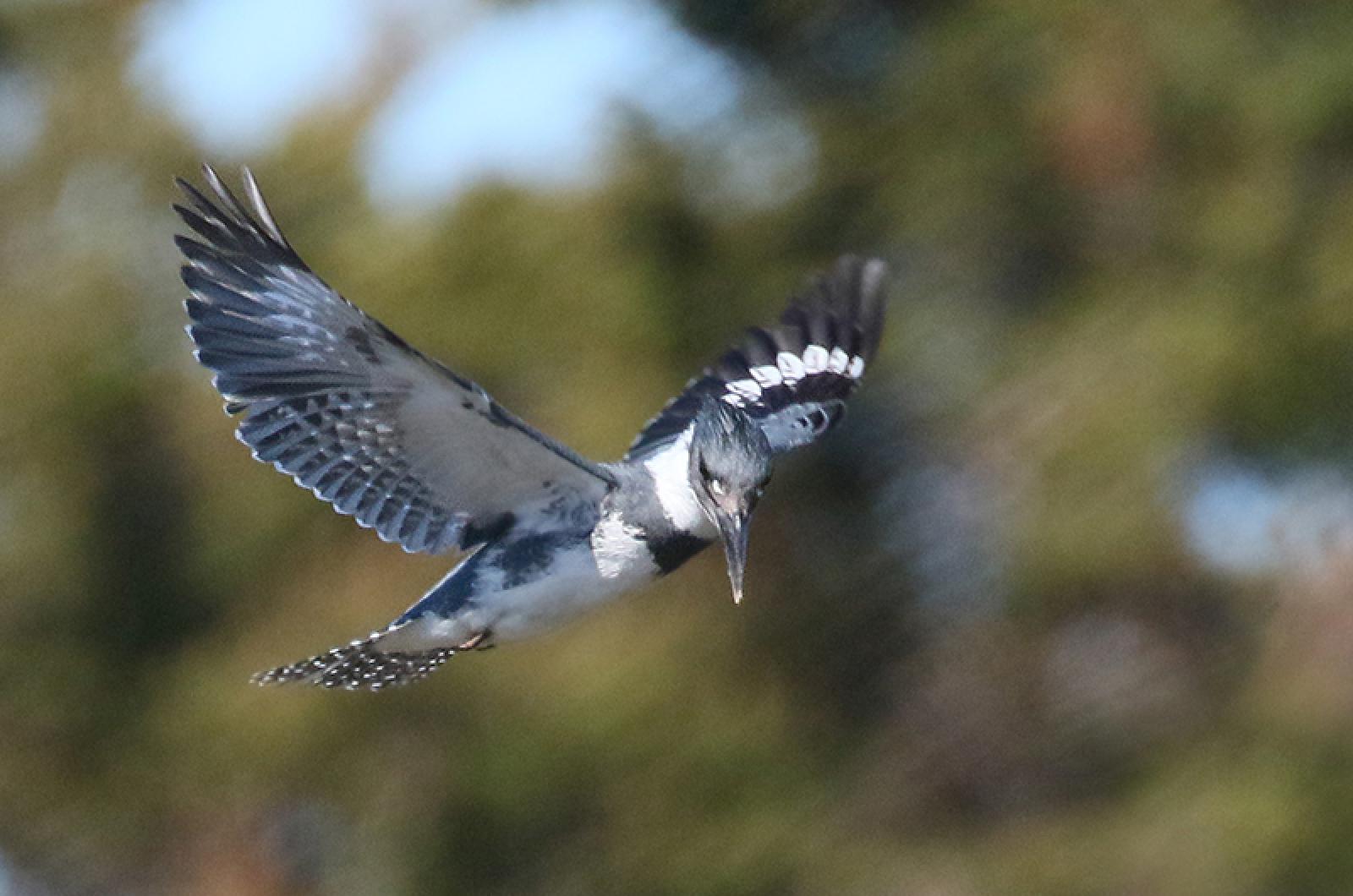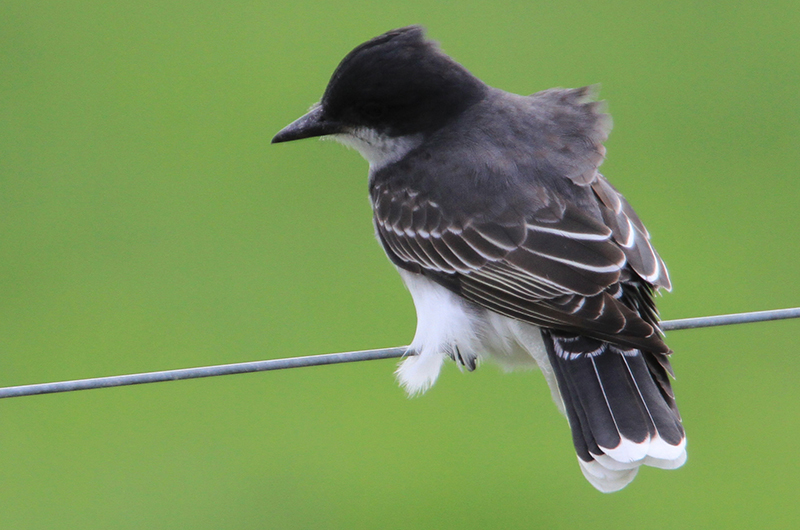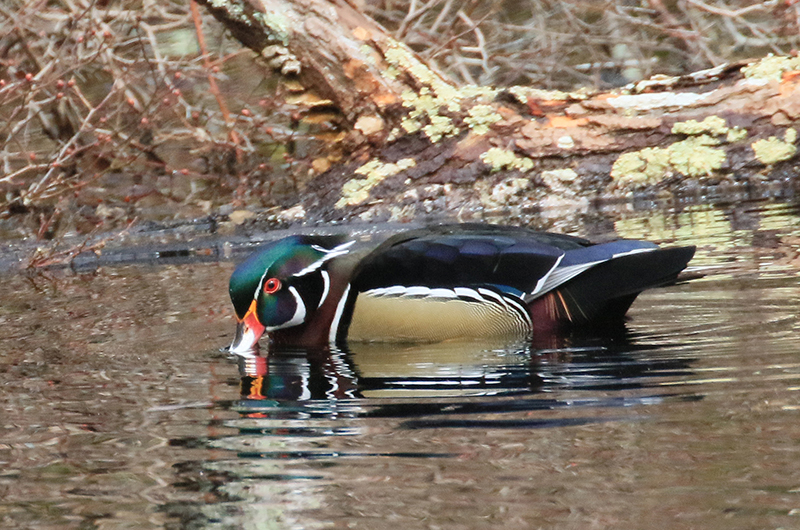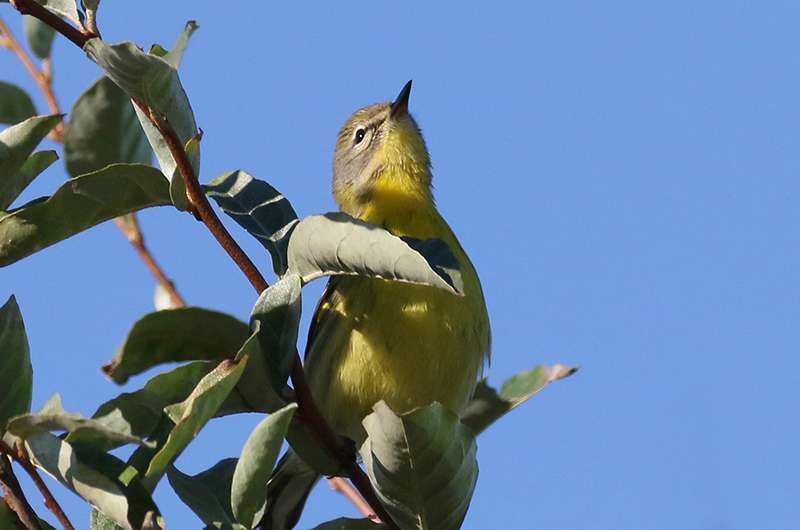The southward migration often means birders go to the Gay Head Cliffs at the western end of the Island. Birding can be spectacular there if you visit on a day when migrants are congregating there, waiting for favorable weather to continue their migration. But migrants can be anywhere.
With that in mind, I visited the headquarters of the state forest on Sept. 20, and was not disappointed, finding 28 species. A female belted kingfisher was hunting over the pond. Two eastern kingbirds were hawking for insects in the field with the instrument landing system towers. They obviously did not know that they were supposed to have left earlier this month. Warblers included two Cape May warblers and two quickly moving unidentified warblers in spruce trees and a common yellowthroat which was tucked down inside a shrub thicket. I also counted 11 red-breasted nuthatches, 13 eastern towhees and four catbirds. A good morning!
Perhaps most unusual was that the two most common species were blue jays and black-capped chickadees. I was almost always within earshot of blue jays, so there likely were many more than the 51 I saw or heard. We tend to take them for granted but they really are very striking birds. Were the blue jays migrants? We sometimes see flocks of them migrating westward from Gay Head and this is their peak migration period. But Bob Shriber and Lanny McDowell both report only a couple of blue jays there this week.
One of the fascinating things about birding is that we do not know what we will find when we head out searching for them.
Bird Sightings Belted kingfishers seem to be more conspicuous now. I spotted one at the state forest mentioned above; Harlee Strauss had one on Sept. 20 at Chilmark Pond along with six lesser black-backed gulls; Pete Gilmore found two of them at Sheriff’s Meadow Sanctuary on Sept. 18; Cynthia McGrath saw one along County Road between the fire station and Tradewinds in Oak Bluffs that same day; and Pete Gilmore spotted one at Town Cove on Tisbury Great Pond on Sept. 17. That is more sightings than we have had all month.
Susan Whiting’s feeders are out now, and she reports a brown creeper on Sept. 20 and highlights for the previous few days include ovenbird, two pine warblers, eastern towhees, catbirds, sharp-shinned hawks and both song and chipping sparrows.
Will Harcourt-Smith spotted two very skillful and acrobatic fliers at Lucy Vincent on Sept. 19, with one peregrine falcon and 1,000 tree swallows. Bob Shriber estimated he saw a flock of 1,100 tree swallows at the Gay Head Cliffs on Sept. 18. Both species are acrobatic, capable of catching their very mobile prey on the wing, although the size of their prey items differ.
In other predator news, the adult bald eagle was spotted near Town Cove on Sept. 17 by Pete Gilmore.
How long will the sandhill crane hang around? Pete Gilmore spotted it at Muskoday Farm on Sept. 15, while Greg Pattison saw it flying over his house that day.
Waterbirds are the focus of the rest of this column. Will Harcourt-Smith found a whimbrel at Lucy Vincent on Sept. 19. All the rest of the sightings were on Sept. 16. Sharon Simonin spotted the northern shoveler and a solitary sandpiper at the State Forest Pond on Sept. 16. Neither were there when I visited on the morning of Sept. 20. Lanny McDowell stopped by Blackwater Pond Preserve and spotted four almost full grown wood ducks with their parents, and a somewhat late lesser yellowlegs was spotted by Jeff Bernier at Little Beach along with the more usual sanderlings, oystercatchers, ruddy turnstones and both semipalmated and black-bellied plovers. Finally, Timothy Graves reports both common and Forster’s terns in Vineyard Haven Harbor.
Robert Culbert is an ecological consultant with Nature Watch LLC living in Vineyard Haven.










Comments (1)
Comments
Comment policy »